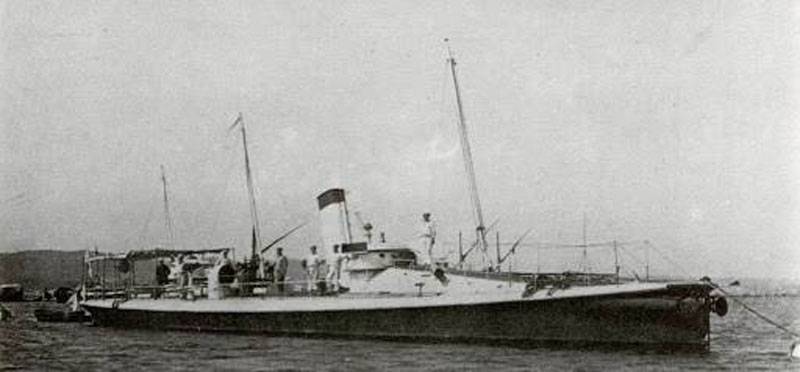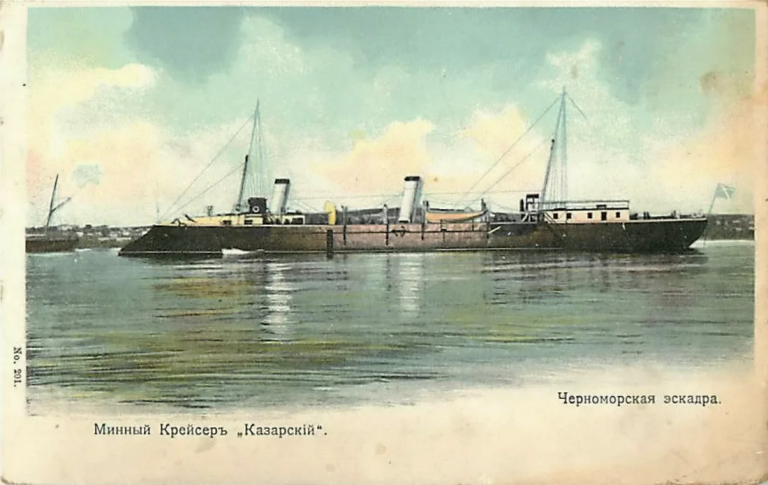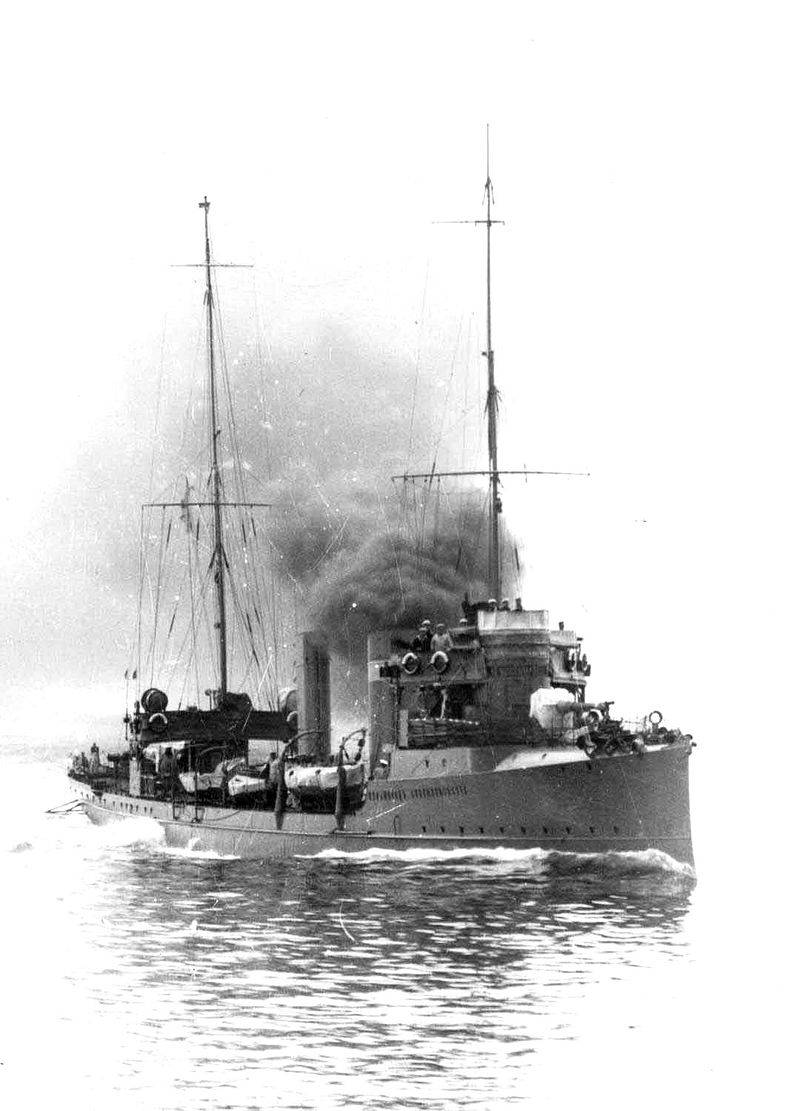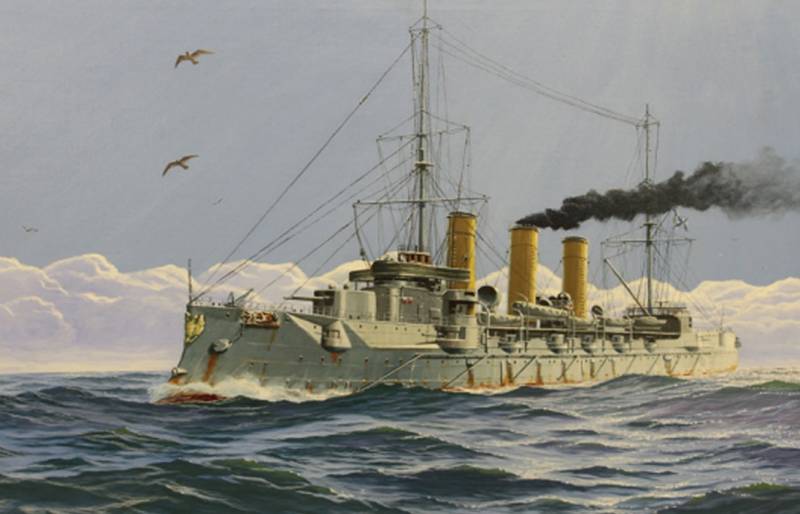German ships in the Russian fleet

Such a simple fact - in shipbuilding, Russia lagged behind the developed countries of the world, which determined much in the construction of a domestic fleet... And not only ships: mechanisms, artillery, instruments, civilian ships - a lot came from Germany. This tradition lasted until 1914. And then, after a break caused by the First World War, it was resumed again. And part of the Soviet fleet, just like the imperial one, had a German accent. And the last case of purchases of German ships fell on the 80s of the XX century ...
It is impossible to grasp the immensity, but it will be interesting to run through the most iconic ships that the Germans built or designed for us.
German-built destroyers
On November 16, 1885, a contract was signed for the construction of the same ships for the Black Sea Fleet (total cost 555 rubles, delivery during March-April 224.)
The Shikhau company built destroyers for the German fleet, and it did not disappoint the Russian fleet with the Abo class - in 1886 our fleet received nine destroyers with a displacement of 87,5 tons and a speed of up to 21 knots. Of these, six destroyers were received by the Black Sea men, three - by the Baltic. "Abo" served until 1925, having managed to take part in the First World War as a messenger ship, in the Civil War - as part of the Volga Flotilla as a gunboat and a minesweeper, and in the postwar years - as a ship of the Marine Guard. Seven were decommissioned in 1910 due to obsolescence, and another in 1913.
They did not perform military feats, but they did not have a war on their youth. And so - reliable and advanced ships for their time. Moreover, two more destroyers were already built in Russia, in a collapsible version, for the needs of the Far East, where they took part in the Russo-Japanese War.
Then the Germans built two more destroyers for the Black Sea Fleet - "Adler" and "Anakria". The first of them reached a speed of 26,5 knots during testing, becoming at that time the fastest ship in the Russian fleet. As many as 10 destroyers were built according to the Anakria type at Russian shipyards. But the era of small destroyers was ending, and in addition to kids, large mine ships were needed.
The first mine cruisers of our fleet were built in Russia, but they were not very successful - "Lieutenant Ilyin" and "Captain Saken". According to the admiral Kaznakov's commission:
They were too weak and poorly seaworthy for a reconnaissance squadron and too slow-moving to destroy enemy destroyers.
After realizing this fact, an appeal to the Germans followed. And the Germans did not disappoint, remaking their project of a divisional destroyer (what they would later call the leader) to meet the needs of the RIF. In 1890, a 450-ton ship with a speed of 21 knots was handed over to the customer, which is not inferior in combat capabilities to the Ilyin, at a cost of 650 thousand marks (700 thousand - subsequent ones).
The series includes six ships: three - built by the Germans, three - at our shipyards. The ships served for a long time, took part in the Russo-Japanese and the First World War. And they carried the flags of the three fleets. Two cruisers became Japanese trophies and carried the flags of the Japanese fleet until 1914. Two in the First World War went to the Finns and survived as gunboats until 1937 and 1940, respectively.

In this story does not end. And in 1899, the same Shikhau, for the needs of the Far East, was building four Kasatka-class counter-destroyers. 350-ton destroyers became part of the First Squadron, passed the siege of Port Arthur (one was lost), served in the Siberian Flotilla, and in the First World War they moved to the Arctic Ocean. The Germans were written off only in 1925.
But that's not the whole story. During the Russo-Japanese War, the Germans were ordered another 10 counter-destroyers of the type "Mechanical Engineer Zverev", in fact, all the same "Killer Whales". And the order was completed. And with an eye on delivery to Vladivostok in disassembled form - for assembly already at the theater of operations.

The last mine ships were mine cruisers, ordered in the same period in Germany. This time to the Vulcan firm.
In total, 24 ships of slightly different types have been built in Germany and Russia. Our first truly seaworthy destroyers with a displacement of up to 820 tons, they formed the backbone of the mine forces of the Baltic Fleet. Four were built for the Black Sea with original armament of 1 - 129/45 mm and 5 - 75/50 mm.
Ships in 1914 fought in the Baltic, in the Caspian, in the Black Sea, four of them survived the Second World War as gunboats ...
It is difficult to overestimate the role of the Germans in the formation of our mine forces; it is easier to call it invaluable. In addition to building ships and developing projects, the Germans, for example, supplied steam turbines for Novik.
Moreover, as a rule, due to reliability and operational simplicity, German ships were long-livers, remaining in service for more than forty years.
Cruisers
In addition to destroyers and torpedo boats, the Germans built excellent cruisers for us.
This is a pair of six-thousanders "Bogatyr and Askold", and a scout - "Novik", and their domestic development in the amount of five pieces (three - "Bogatyr", two - "Novik"). Of the eight cruisers, two were built for the Black Sea, and went through the First World War. "Cahul" under the name "Comintern" as a minesag took part in the Great Patriotic War. Little-known fact - during its restoration they used part of the mechanisms of the series' progenitor - "Bogatyr". "Askold" went through the Russo-Japanese War, took part in the hunt for "Emden", the Dardanelles operation, served in the SLO flotilla ...
"Novik" is the only cruiser of the First Pacific, which continued the breakthrough after the battle in the Yellow Sea and reached Sakhalin. "Emerald" - broke through on the morning of May 15, 1905, past the entire Japanese fleet.
This is all known and described for a long time.
Much less is written about the fact that the history of the German cruisers of the Russian fleet is far from over.
Meet - "Elbing" and "Pillau", they are "Admiral Nevelsky" and "Muravyov-Amursky".
The RIF shipbuilding program, adopted in 1912, provided for the construction of two cruisers for the Siberian Flotilla. The competition was won by Nevsky Zavod. But the fastest construction speed and low cost were guaranteed by the Shikhau company, which has long been familiar to the Russian admirals.
The ships were thought to be interesting - with a planned displacement of 4000 tons, they had to carry 8 130/55 guns, four antiaircraft guns and rails for setting mines. The speed was supposed to be 28 knots, the range - 4 miles. The lead cruiser was to be delivered on July 300, 15.
But, alas, they did not have time. And practically finished ships entered the German fleet. The first of them went through the war in the Baltic, the Battle of Jutland, the second battle at Helgoland and the sailor uprising. After the war, it was transferred to Italy in order to serve there until 1943, when it was flooded by its own crew, but raised by the Germans. True, it was not destiny for the old cruiser to again resemble the German flag, and it was quietly dismantled for metal. The fate of the second is shorter - in the Battle of Jutland, he fired the first salvo, but at night he was rammed by the battleship Posen and sank.
For the next 25 years, it was not up to the export of ships to the Germans, whose fleet, thanks to Versailles, shrank to an indecent size, and not to buy us, all the forces were taken by overcoming the consequences of the Civil and industrialization. But as soon as the restoration of the fleets began, cooperation was resumed.
As far as cruisers are concerned, this is, of course, the Luttsov, a heavy cruiser sold by the USSR in February 1940. In some ways, he repeated the fate of "Elbing" and "Pillau", except that General Secretary Stalin, taught by the bitter experience of Tsar Nicholas, carried out the completion in Leningrad. At the start of the war, the ship was 70% ready and, despite this, raised the flag and opened fire when the German troops approached the city. After the war, there were plans for its completion, but obsolescence and high cost transferred it first to the category of an eternal unfinished, then a training non-self-propelled ship, and later - a floating barracks. Nevertheless, the ship made its contribution to our victory and brought undoubted benefits to the fleet, both military and technical - as an example of the latest German shipbuilding.
The history of Soviet-German cooperation in the construction of cruisers ends with an interesting project 69I. The Germans, in connection with the refusal to build new battleships, formed six extra two-gun turrets with 380/52 mm guns. We were building two large cruisers of Project 69, the three-gun turrets for which, like the guns themselves, were developed by the Barricades plant. And he did it - not really. In the sense: in theory - there was everything, but in practice - nothing but drawings. In this light, Krupp's proposal to buy the towers really came to court, and in November 1940 a contract was signed. Alas, not fulfilled. A large cruiser armed with three twin-turrets, similar to those of the Bismarck, could turn out to be very curious.
Rest
There were other ships, and other projects, and submarines: from "Trout" to the famous "S". There were trophies after the defeat of Germany: both status trophies - in the form of the cruiser "Admiral Makarov" (ex-"Nuremberg"), and useful ones - like the PL 21 series.
The last German project in the service of the Navy of the USSR and the Russian Federation was the IPC project 1331M. 12 ships entered service from 1986 to 1990. Built with performance characteristics, initially worse than their Soviet counterparts, they turned out to be unexpectedly reliable and durable. Six ships of this type are still serving in the Baltic Fleet. In this sense, nothing has changed over the century - German technology is extremely reliable and unpretentious. And the one that is being built for themselves, and the one that they are building for export.
I realize that the article is incomplete. But cooperation on GEM requires no less space. The same amount for artillery. And then there were instruments, ship seaplanes, civilian ships ...
Russia also cooperated with other countries, primarily with France, Italy and England. And this is normal - you cannot be strong in everything.
Still, our most successful ships of foreign projects are German. This does not mean that we copied the Germans - their projects were reworked according to our needs. And the heir could differ from the prototype, as, for example, in the pair "Novik" - "Pearl".
We did not copy, we studied. And fact is fact: in the current Russian fleet, in our design school, there is a drop of German blood. And I will not say that this is bad. After all, the German technical school (in contrast to their political ideas) is simply brilliant.


Information